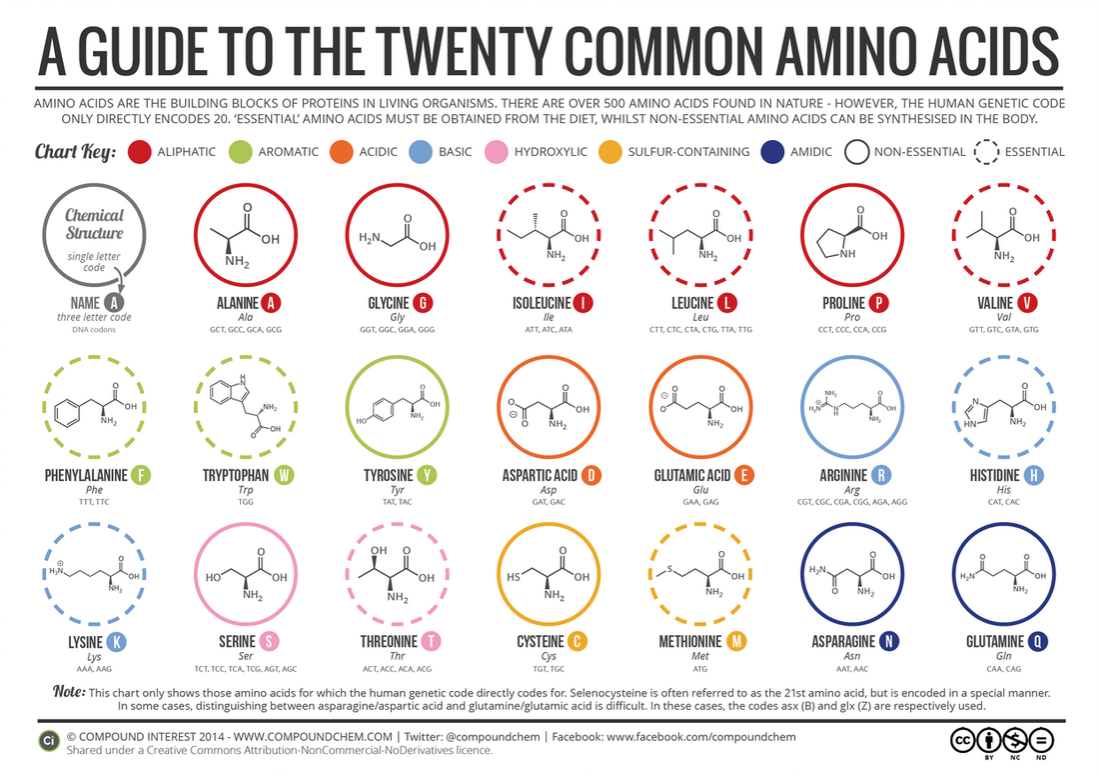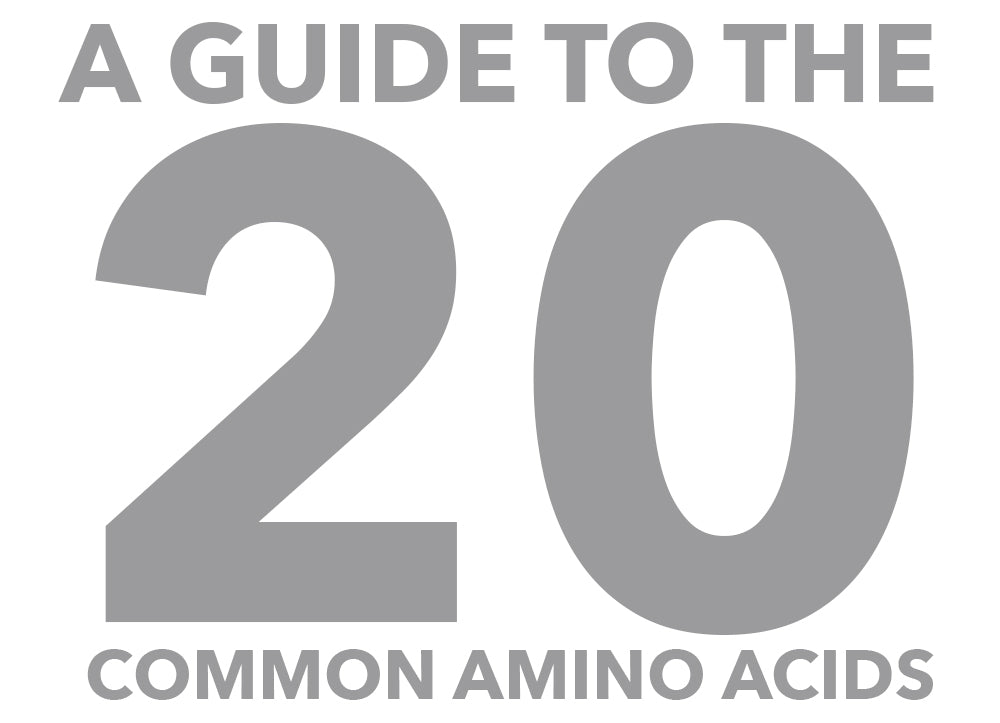What is an amino acid? A class of organic compounds that contains at least one amino group, -NH2, and one carboxyl group, -COOH: the alpha-amino acids, RCH(NH2)COOH), are the building blocks from which proteins are constructed. Wait…did someone say protein?
All chemistry aside, amino acids are the building blocks to life. When protein is consumed and broken down, what is left are amino acids. These amino acids are then used to build new protein for the body to use. There is a reason gym goers are slamming down protein shakes after a workout or the need for high-protein, low-carb diets. There is a reason for this. Protein is used by every cell in the body. Protein is used for hair and nail growth, build and repair tissue, production of enzymes, hormones, body chemicals and used as building blocks for bone, muscle, skin and blood. Pretty much everything. Protein are considered a macro-nutrient. Macro-nutrients are the main nutrients that make up the food we eat: proteins, carbohydrates, and fat. We need 20 amino acids for normal functions of the body. Amino acids can be put into three main categories:
· Essential
· Nonessential
· Conditional

ESSENTIAL AMINO ACIDS
Essential amino acids are just that, essential. The reason for this is that they cannot be made by the body. Because of this, we must get them from the food that we eat. There are 9 essential amino acids: histidine, isoleucine, leucine, lysine, methionine, phenylalanine, tryptophan, threonine, and valine.
Foods that have all essential amino acids are considered complete proteins and they include:
· Meat
· Seafood
· Poultry
· Dairy Products
· Eggs
Unlike essential amino acids, nonessential amino acids are produced by our bodies, even if we do not get it from the food we eat. Nonessential amino acids include: alanine, asparagine, aspartic acid, and glutamic acid. CONDITIONAL AMINO ACIDS
Conditional amino acids are usually not essential, except in times of illness and stress. Conditional amino acids include: arginine, cysteine, glutamine, tyrosine, glycine, ornithine, proline, and serine. It is easy to achieve the correct amount of amino acids that are needed for the body to conduct its normal functions. A balanced diet with a variety of proteins, fruits, grains, and vegetables should be able to accomplish this. Supplementation could be used for specific needs but a moderately active individual should get all the necessary amino acids with a balanced diet. In fact, supplementation could be completely avoided with the right amount of food consumption. You do not need to eat essential and nonessential amino acids at every meal, but getting a balance of them over the whole day is important so use variety in your protein choices to not only kill cravings but also increase meal enjoyment!
by Will Del Pizzo, StrongHouse Carlsbad 03/28/2019




Leave a comment
This site is protected by hCaptcha and the hCaptcha Privacy Policy and Terms of Service apply.